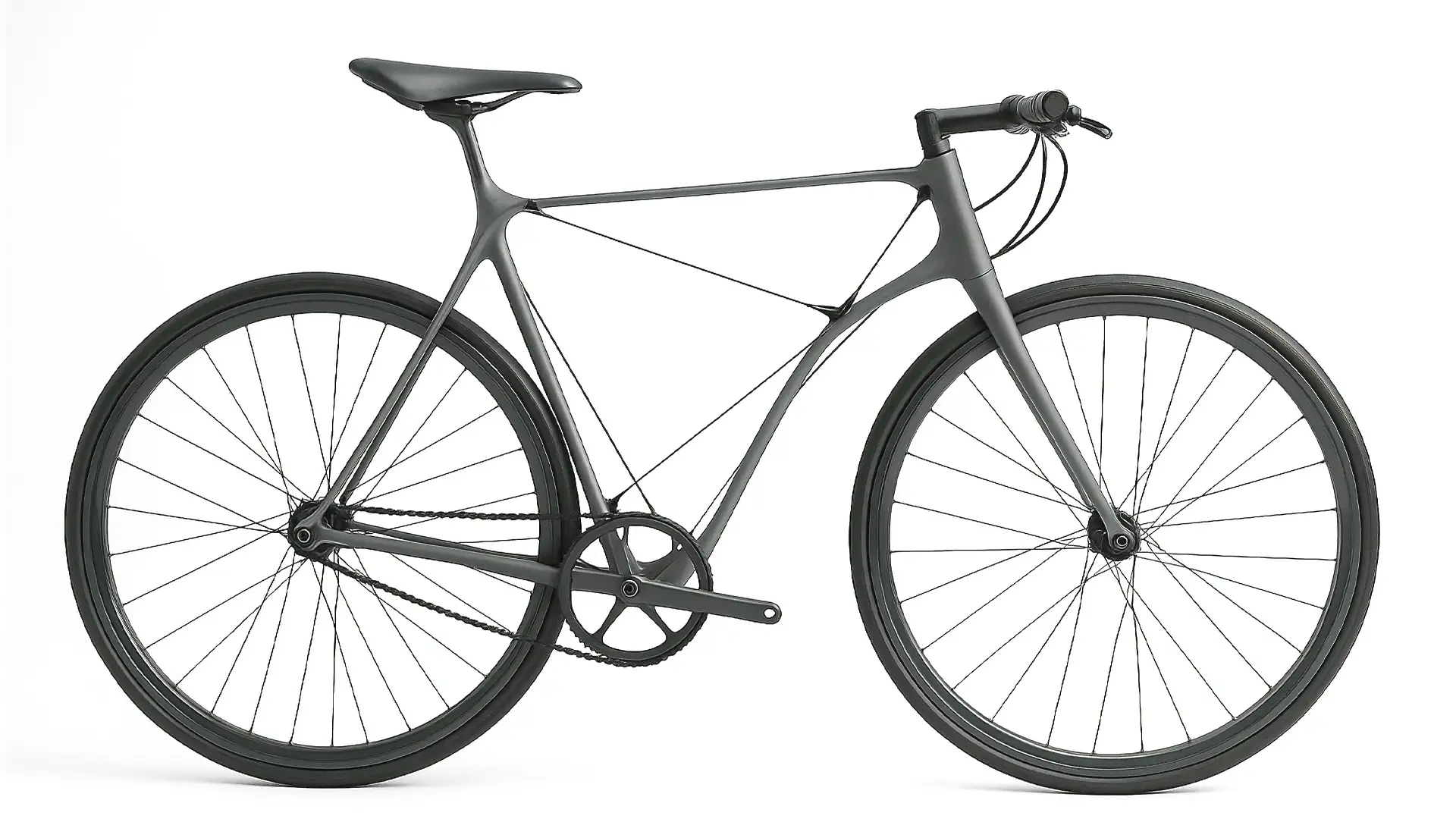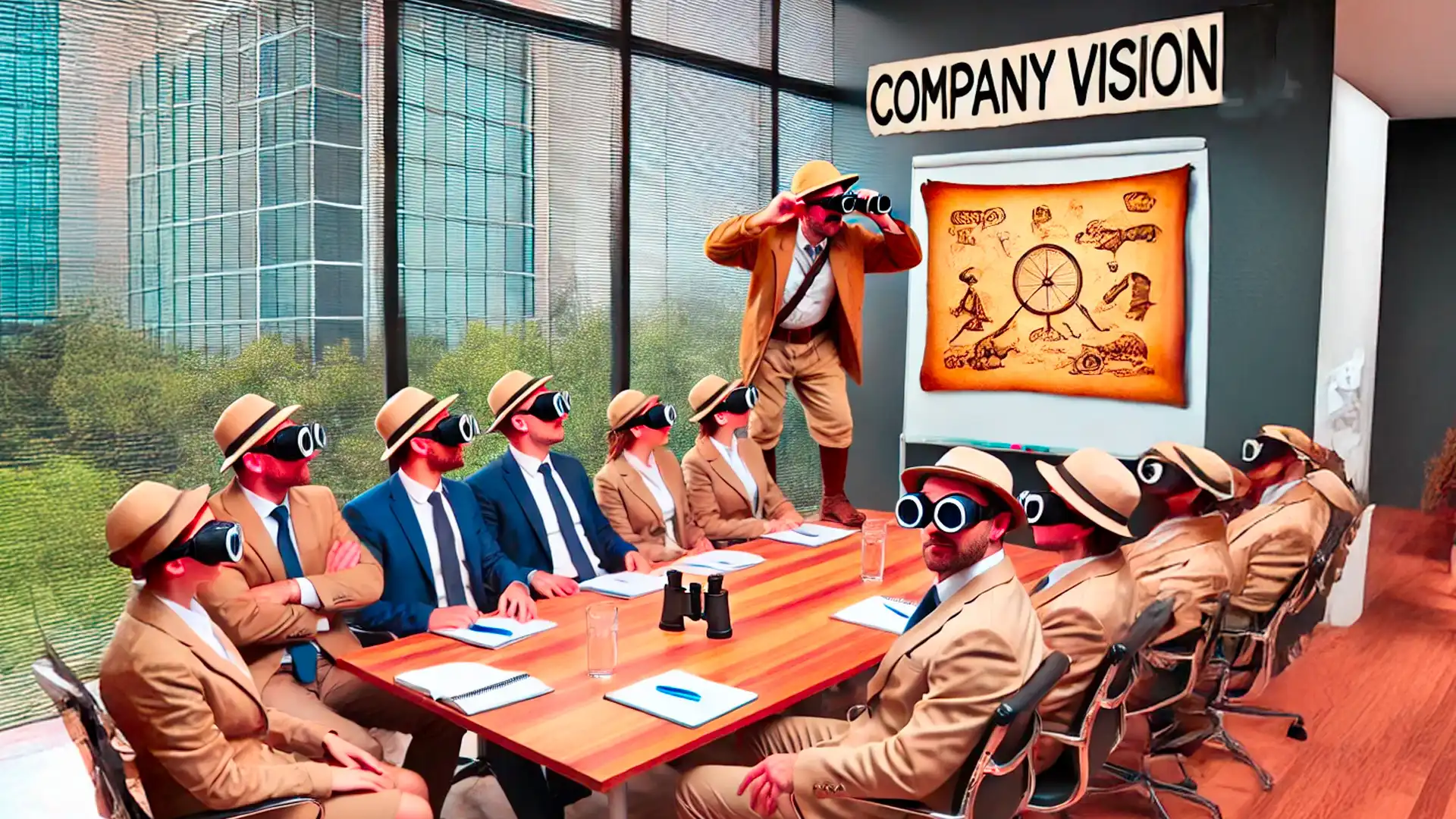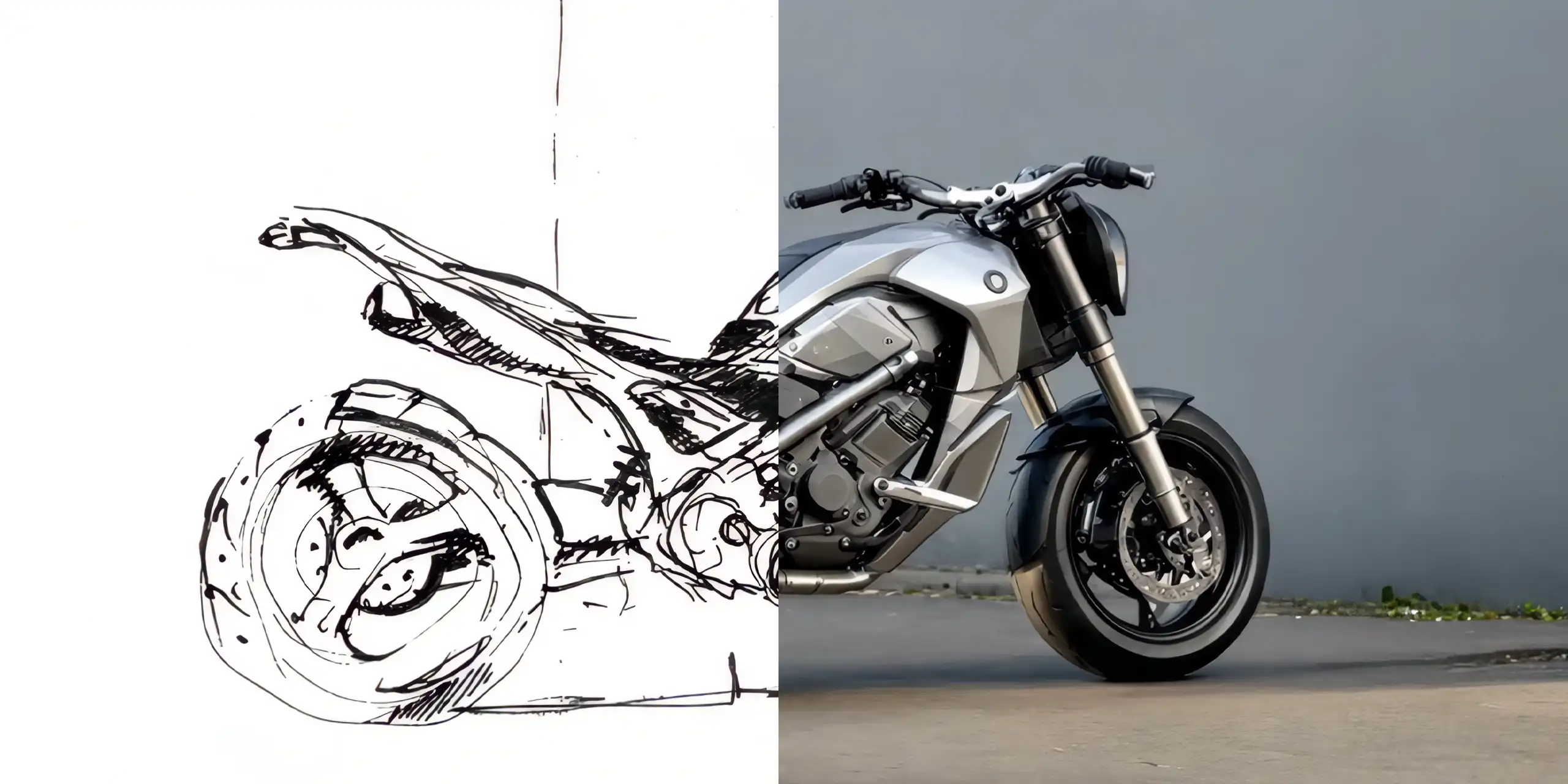What a Bicycle Frame Experiment Revealed About the Limits of AI in Design
AI is quickly becoming an important tool in our product designer’s toolkit — from accelerating concept generation to simulating lighting, materials, and finishes in near real-time. But as with any tool, understanding its limitations is just as important as embracing its capabilities.
Recently, we ran an experiment: could AI help us design an ultra-light bicycle frame based on tensegrity, a structural principle where rods are held in place by a network of tensioned cables? This tensegrity principle, introduced by Buckminster Fuller and first demonstrated by Kenneth Snelson, promises significant weight reduction and a unique visual language rooted in engineering logic.
We turned to ChatGPT and its image-generation tools to explore the idea. After testing a wide range of prompts, we received a collection of renderings with floating rods, tension cables, and dramatic geometry. At first glance, it looked promising.
But something was off.
The AI had replicated the style, but not the structure. The rods weren’t under compression. The cables weren’t bearing tension. The delicate balance of forces that makes the system work was entirely missing. The result was all visual — zero logic.

Pattern Recognition ≠ Design Thinking
This experiment revealed one of the fundamental limitations of current AI tools in product design: they’re brilliant at mimicking visual cues but don’t understand functional intent. They recognize patterns in data — not physics, material behavior, or structural principles.
In this case, ChatGPT created compelling renderings — which improved further with some refinements using Midjourney — but none of the designs were actually functional.
That doesn’t make AI useless. On the contrary — it’s incredibly effective for moodboards, rapid form exploration, and pushing visual imagination. But when performance, structure, or usability come into play, it still needs a designer in the loop. Someone who understands context, constraint, and consequence. Someone who can balance all aspects to find the optimal solution.
Why Designers Still Matter
This project was a timely reminder: design isn’t just about appearance. It’s about reasoning. It’s about knowing when something looks right because it works — not just because it looks nice.
As AI evolves, designers won’t be replaced, our roles will shift — toward asking sharper questions, identifying what AI overlooks, and bridging the gap between appearance and intention. Because in the end, great design isn’t just what you see — it’s what holds everything together.
This blog was published earlier as an article on linkedin.




